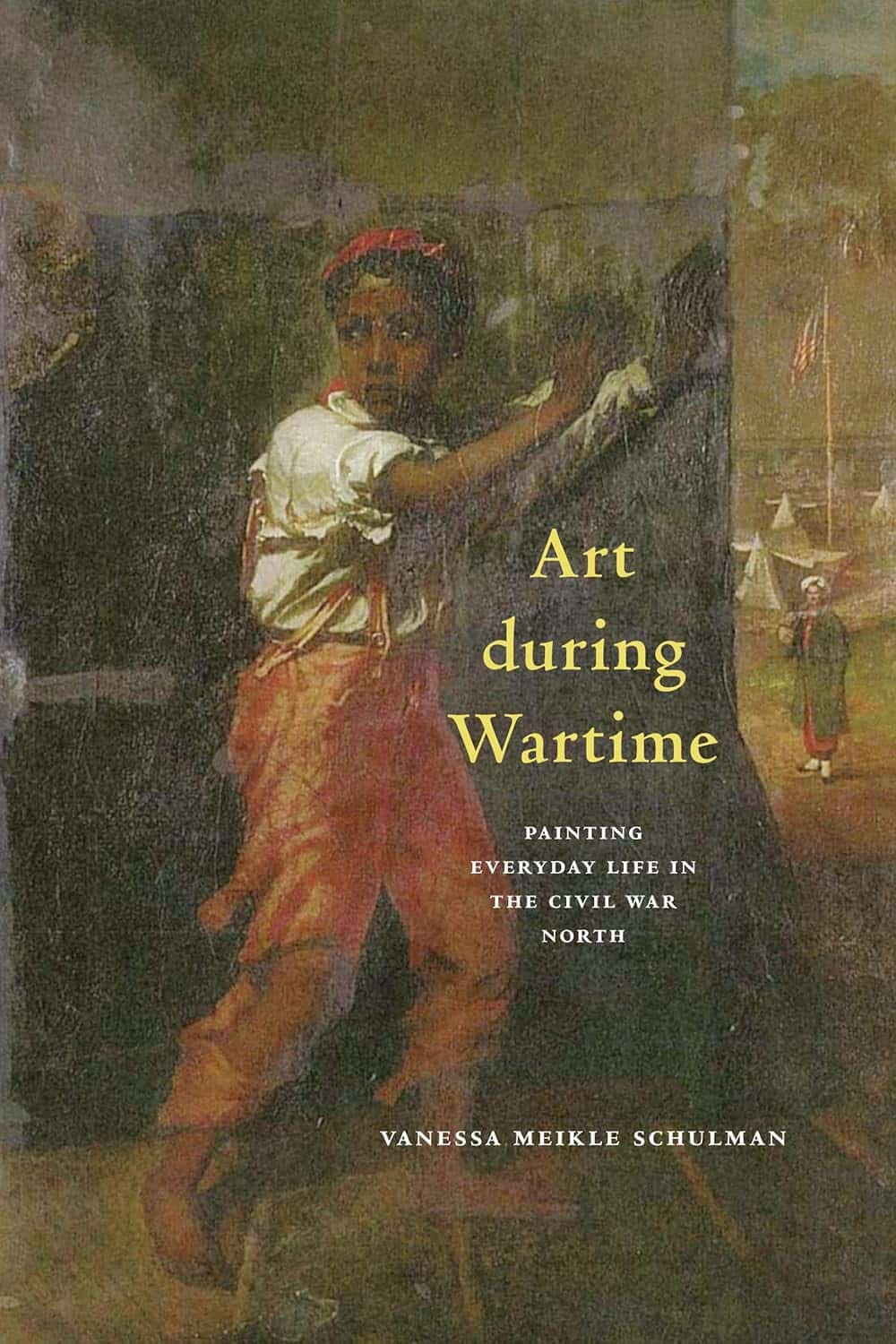Book Review: Art during Wartime: Painting Everyday Life in the Civil War North

 Art during Wartime: Painting Everyday Life in the Civil War North. By Vanessa Meikle Schulman. Amherst and Boston: University of Massachusetts Press, 2024. Softcover, 259 PP. $32.95.
Art during Wartime: Painting Everyday Life in the Civil War North. By Vanessa Meikle Schulman. Amherst and Boston: University of Massachusetts Press, 2024. Softcover, 259 PP. $32.95.
Reviewed by Dr. Audrey Scanlan-Teller
Vanessa Meikle Schulman in Art during Wartime: Painting Everyday Life in the Civil War North, discusses genre paintings—realistic depictions of ordinary people doing ordinary things in ordinary spaces—made between 1862 and 1867 by white Northern artists who worked or exhibited in the New York and Philadelphia regions. The artists in Schulman’s study include Louis Lang (1812 –1893), Lilly Martin Spencer (1822 –1902), Thomas Hicks (c.1823 – 1890), Thomas Waterman Wood (1823 – 1903), Vincent Colyer (1824 – 1888), Eastman Johnson (1824 – 1906), George Cochran Lambdin (1830 – 1896), Joseph W. John (1833 – 1877), and Winslow Homer (1836 – 1910). Schulman argues that the Civil War was a defining event in these artists’ lives. In her words:
These paintings depict a nation in transition that was experiencing intense existential fears about its viability. The war’s constant presence is felt even in visual images that never depict an engagement. With humor, pathos, and incisive social commentary, painters presented some of the most difficult questions of the wartime and early Reconstruction eras. This book argues that genre painting was a type of “fine art” best suited to presenting the complex social truths during the Civil War. (7)
These paintings, made for a white, Northern, middle-class audience, illustrate changing notions about gender, domestic roles, race, citizenship, and disability brought about by the war and its aftermath. Schulman ably interprets their nuanced meanings and narrative for the reader, making them accessible primary source material for understanding the impact of the Civil War.
Schulman structures Art during Wartime into seven chapters, each chapter focusing on one artist and painting as a case study. She examines each painting’s formal qualities, interprets the narrative presented in the image, and discusses how the artist’s lived experience impacted on the work. She uses wartime or early post-wartime exhibition reviews to explain how the paintings were interpreted by art critics when exhibited. Schulman incorporates related visual material to compare with the featured paintings, including paintings by other artists as well as prints and illustrations from popular and widely circulated publications like Harper’s Weekly, Frank Leslie’s Illustrated Newspaper, and Godey’s Magazine and Lady’s Book. She anchors each of the paintings within the historical context with ample primary source documentation.
One of the main strengths of Art during Wartime is Schulman’s clear visual analysis and her convincing contextual and historical interpretation of the featured paintings. The focused chapter case studies delve into specific themes, ranging from Northern, white, middle-class perceptions of masculinity and femininity and tensions regarding war-time changes in gender roles, the development of nationally unifying seasonal celebrations, Black emancipation, Black men as franchised citizens and soldiers, and veterans’ disability and pensions. Schulman draws on a wide variety of supporting primary sources, including visual, literary, and historical documents, to make her arguments. The individual chapters are engaging and thought provoking. I found chapters four, five, and six, addressing Black emancipation and enfranchisement and veteran’s disability especially compelling.
The book does read more like a collection of articles than a tightly knit whole. The introduction, which opens with a discussion of Winslow Homer’s The Brush Harrow (1865) (Cambridge, MA: Fogg Art Museum) seems interrupted by an explanation of the history of genre painting, the historiography of genre painting, and an overly detailed mapping of the book’s structure. Likewise, the conclusion, into which an analysis of Joseph W. John’s Harvest Home (1867) (Philadelphia: Union League of Philadelphia) is inserted, reads more like final article in a collection of thematically related articles and concludes the book abruptly. Additionally, the black and white images of several paintings, at least in the paperback version, were rather murky, making it difficult to see the points Schulman was trying to make.
Art during Wartime serves as a valuable reference for anyone interested in Northern Civil War art and artists or Civil War era gender roles, holiday celebrations, Black emancipation and the Black franchise, voting in mid-nineteenth America, concepts of citizenship, and the treatment of disabled veterans and the pension process. There hasn’t been a significant publication on Civil War painting since the Sesquicentennial, and none, to my knowledge, focusing exclusively on genre painting during the American Civil War. To paraphrase Schulman, genre painting is an ideal medium to explore the changes in society as painters present relatable stories and recognizable character types and show everyday life with its societal hopes and fears. Art during Wartime examines and explains the significance of and historical influences behind and within the scenes of Northern Civil War genre painting.
Audrey Scanlan-Teller is an independent scholar who earned her MA and PhD in Art History from the University of Delaware. She was a Kress Fellow at the Walters Art Museum, Baltimore, and on the curatorial staff of the Washington County Museum of Fine Arts in Hagerstown, Maryland, where she still volunteers. She has been interested in American Civil War History since 2002, was a professional Civil War historical interpreter and weapons safety officer and still volunteers at Antietam National Battlefield.